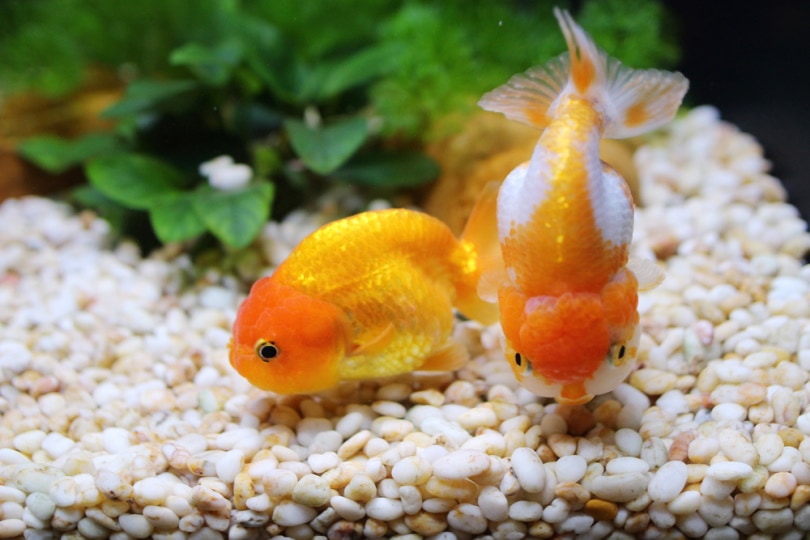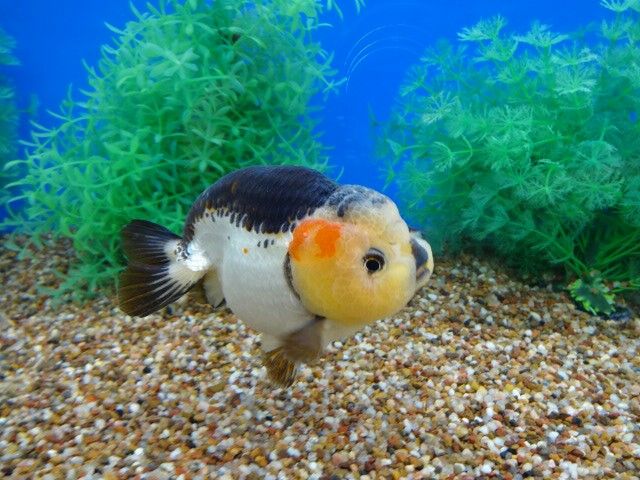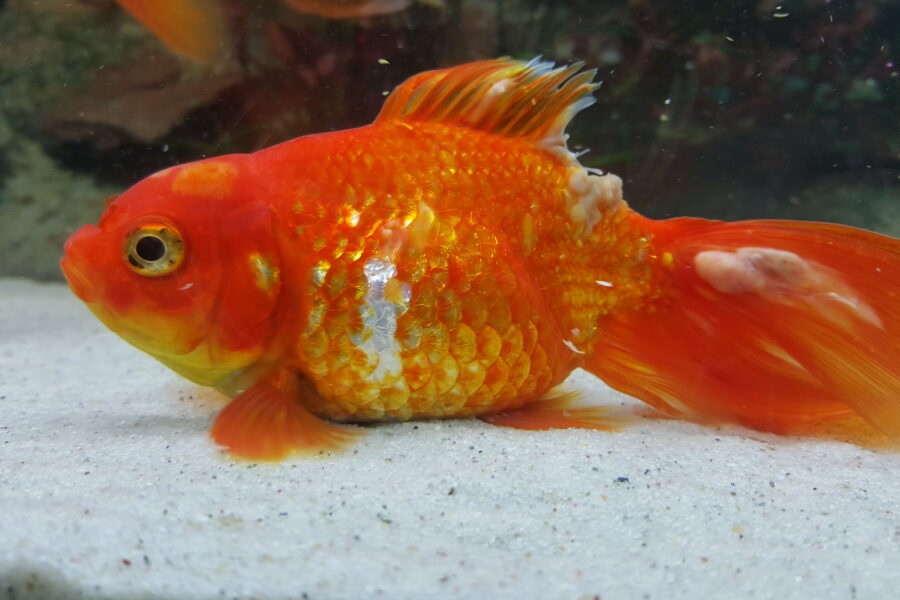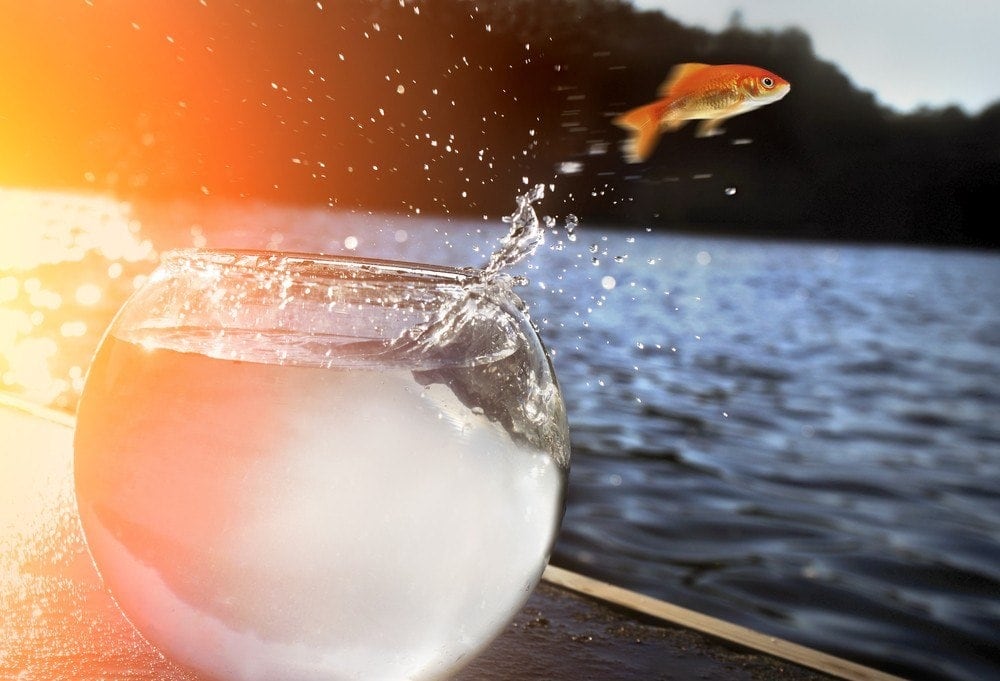
Goldfish jumping out of the tank may seem like an impressive circus act at first glance, but it can actually be a sign of something fishy going on. Before you start selling tickets to the ‘Goldfish High-Jump Show’, let’s dive into the reasons behind these unexpected leaps.
This isn’t your typical fish tale. We’re here to make understanding your goldfish’s behavior as easy as pie. So, buckle up and get ready for a splashy adventure into the world of our finned friends. Let’s keep those goldfish in the tank and not in mid-air!
The Acrobatic Activities of Goldfish
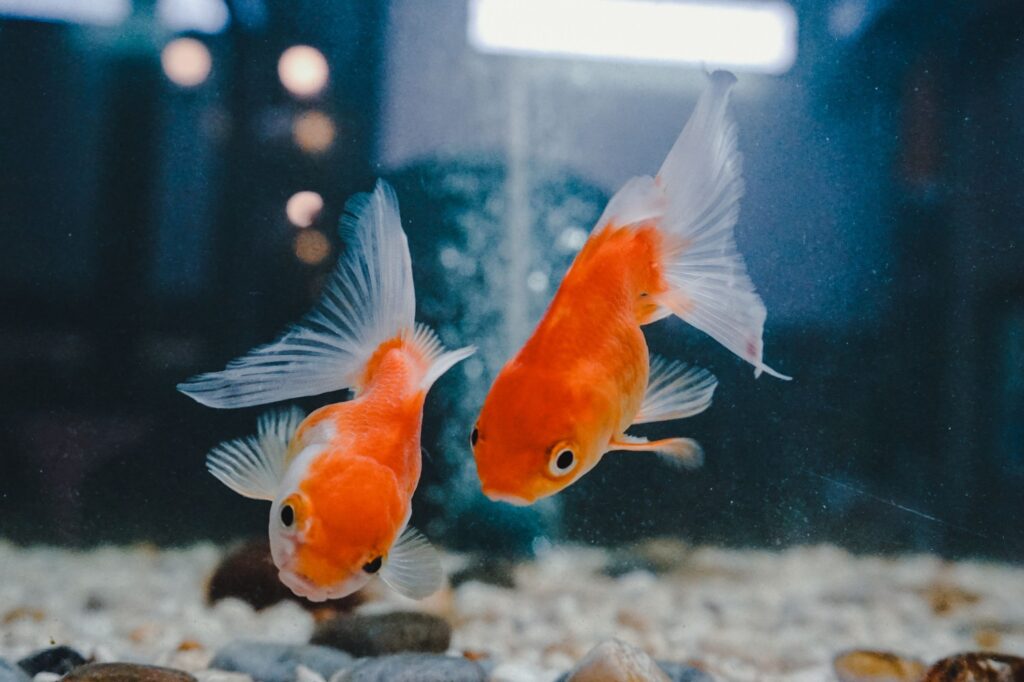
Imagine snuggling on your couch with a cup of hot cocoa. You’re watching your goldfish glide smoothly in their water-filled universe. Suddenly, it leaps out. Now that’s a real binge-worthy episode, huh?
Describing Abnormal Goldfish Behavior
Yet, as entertaining as this fiasco might seem, it’s not exactly Cirque du Soleil. When a goldfish tosses itself out of its tank, it’s far from a magic trick. We’re looking at abnormal behavior that sounds an alarm bell of something being amiss.
Challenging the Myth – Goldfish Don’t Only Swim
It’s time to debunk the myth that goldfish only swim leisurely in your home aquarium. They have some surprise talent to show off too — they can jump! But remember, it’s not for applause. It’s more of a cry for help.
As we wrap up this section, consider that goldfish jumping is a sign of distress. Now, you are probably wondering, why do goldfish leap out? So, let’s dive deeper into the reasons behind the goldfish jumping phenomena. Grab your detective hat as we move to section two to unravel this mystery.
The Leap of Life – Causes
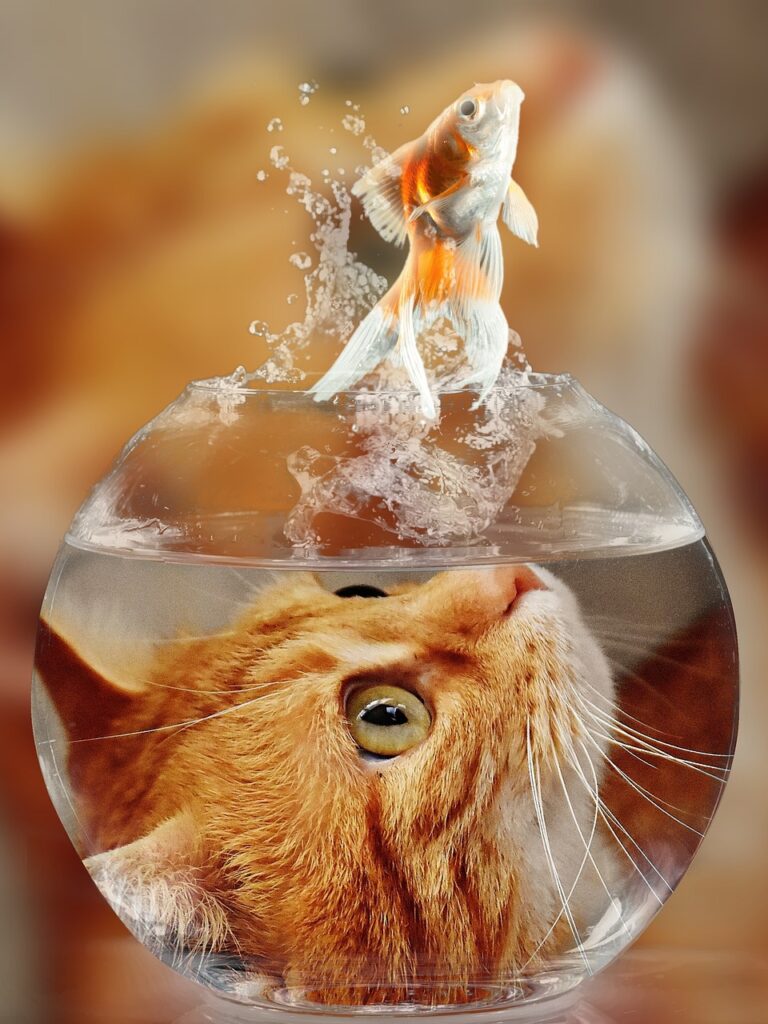
You got a good laugh when Dory insisted she could ‘just keep swimming.’ But why on earth is your goldfish trying out for the aquatic version of the high jump?
Why Is Your Goldfish Jumping Out of the Tank?
One might think performing flips belongs in a dolphin show, not in a fishbowl. But, surprisingly, goldfish are avid jumpers. Do they have dreams of flying or love gymnastics? Not exactly. This peculiar behavior often signals deeper issues.
Anatomy and Goldfish’s Ability to Jump
Biology provides part of the answer. Look at that sleek goldfish shape – their bodies are crafted for agility in water. So, that mid-air twirl isn’t a completely alien move. Still, if your fish is using its vitality for parkour sessions, it’s time to dig deeper.
Could This Be a Cry for Help?
Now, let’s take off our light-hearted lenses. Consistent jumping might be a distress signal, not freestyle fun. Just as dogs whimper and cats hide, goldfish leap in protest.
Wow, fish psychology is a lot deeper than the fishbowl, right? As we take the plunge in trying to decode our goldfish’s messages, we’ll explore some of the common reasons your fish might be staging a jump revolt in the next section.
Solving the Mystery – Common Reasons

Bubbles the goldfish is trying out for the aquarium’s Olympics in high jump, and you’re left scratching your head. Let’s play detective and hone in on some common reasons behind this daredevil habit.
Poor Water Quality
Imagine living in a room filled with your own waste. Not a pretty picture, is it? Well, that’s what poor water quality is like for goldfish. Debris, uneaten food, and fish waste can mess up the water chemistry. These conditions put Bubbles in a binds, and he starts dreaming of fresher pastures, hence the leap.
The Impact of Tank Size
Do you remember feeling cooped up in your tiny dorm room during college? That’s how Bubbles may feel in a small tank. Goldfish need room to stretch their fins. Compact or crowded aquariums can lead to stress and, you guessed it, dramatic leaps for freedom.
Effect of Improper Diet
A balanced diet‘s importance isn’t just for us humans. Bubbles equally needs the right grub to keep his health in check. An improper diet can make him feel listless or sick. It might also bring about that desperate need to adjust his surroundings. So, let’s not cut corners on his meals!
Other Environmental Stressors
Lastly, things like noisy surroundings, high temperatures, and even an over-friendly cat smushing his face against the tank could stress your fish. Always remember – a stressed goldfish is a jumping goldfish.
Now that we’ve unraveled some underlying causes, the next step might be less about playing detective and more about playing hero. Let’s dive (not jump!) into ways you can prevent Bubbles’ leaping antics in our next section, “Preventing Aerial Escapades”.
Preventing Aerial Escapades
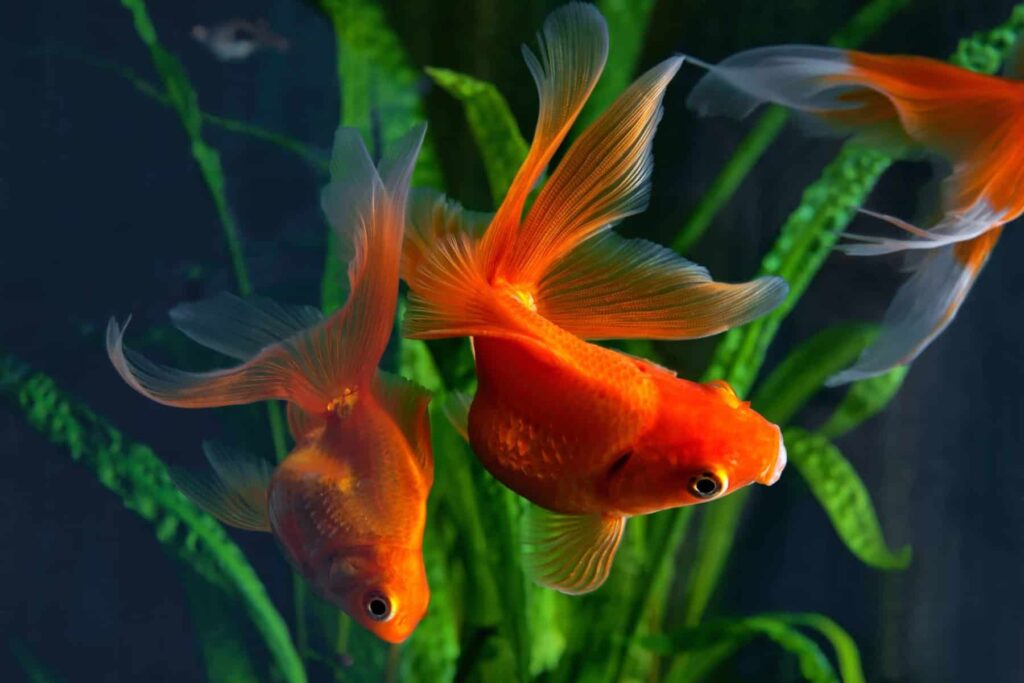
We’ve covered the why, now let’s dive into the how-to of preventing a Houdini-inspired goldfish escape. This section is your guide to creating a no-leap zone for your little finned friends.
In-Depth User Guide to Maintain Optimal Water Quality
Water, the life elixir for goldfish. But what about the quality? Bad water is like living in a polluted city with no escape. Water testing kits are your best friend. These kits can detect harmful elements like ammonia, nitrite, and nitrate levels. Don’t just toss in tap water and expect your goldfish to thank you for it. It needs to be treated first, to remove chlorine and other harmful substances. Regular water changes are key – about 10-20% per week.
Prepare for the next section where we dive deeper into creating a dream tank (hold the escapist maneuvers) for your goldfish.
The Right Tank for Your Goldfish
A cramped Goldfish is a jumping Goldfish. Giving your goldfish enough space can prevent unscripted leaps of faith. So how big should it be? A general rule is that you need 20 gallons for the first goldfish and another 10 gallons for each additional one. A larger home not only gives the goldfish more room to swim but also helps maintain water quality.
Before we jump to conclusions, let’s talk diet. Coming up next – all things nutrition for your goldfish.
Keeping Your Pet’s Nutrition in Check
Yes, goldfish has food preferences too! Just like kids, goldfish love variety in their diet. Don’t stick to only flakes. Mix it up with live food, vegetables, and fruit chunks. Overfeeding your buddies can muddy the water and create health problems. Remember, your goldfish belly is smaller than their eye. A pinch of food per fish is usually enough.
Thanks for keeping up! That wraps up tips on creating idyllic (grounded) living conditions for your fishy friend. Next, we will take a closer look at emergency measures when your goldfish does a flip outside the tank. Stay tuned!
Emergency Measures When Goldfish Leaps Out

Imagine walking into your room to find your goldfish playing Marco Polo, solo, on your bedroom carpet. It’s a hairy moment, quite literally if you have a dog. Now, what should you do?
First Responses to a Jumped Goldfish
First things first, don’t panic. If your goldfish has taken a leap, time is of the essence. Gently scoop them up using wet hands or a soft net, minimizing physical contact as much as possible. Plop them back in the tank, but do it gently; they’ve had enough excitement for one day.
Handling Injured Goldfish
What if your goldfish is injured, you ask? Once again, don’t panic! More often than not, your goldfish will recover on its own. If there are visible injuries, however, matured aquariums are your best bet. These are established by allowing beneficial bacteria to grow. This creates a safer environment for healing while reducing the risk of disease.
The Importance of Preempting Jumps
Free Willy stunts in your home can be prevented. Some goldfish-proofing, like keeping your tank’s water level a bit lower, could discourage adventurous leaps. You could also use a tank cover but ensure it has ample ventilation. After all, you don’t want your fish to jump from the frying pan into the fire – or from the open air into a suffocating tank.
On to the next step! Now that you know how to tackle goldfish-gone-rogue situations, shall we dive into creating a serene habitat for them called ‘home’? Let’s unravel the secrets to a happy, stress-free tank – or should I say – the Goldfish Sanctuary.
A Happy Tank – Your Goldfish Sanctuary
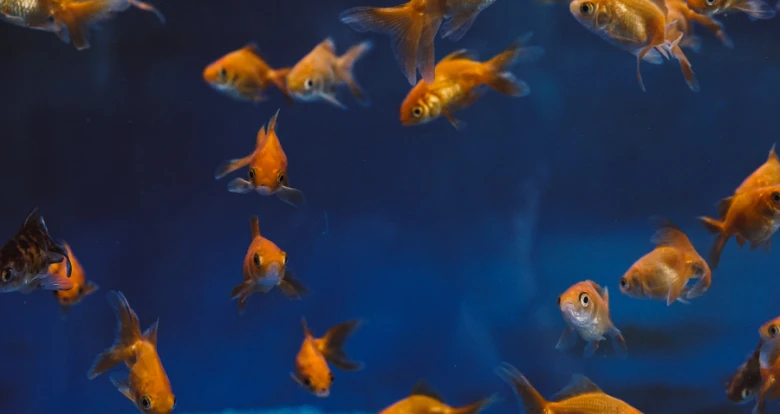
After wrangling with airborne acrobatics and emergency measures, it’s time to focus on nurturing tranquility. You know, the zen state everyone talks about, just underwater! Your golden-hued buddies deserve nothing less than a perfect sanctuary to swim in.
Creating a Stress-free Environment
Now, how do we ensure that our floating orange friends don’t prematurely transform into flying fish? Simple, steer clear of stressors! You might imagine your goldfish thinking, “Easy for you to say, buddy!” but trust me, it’s achievable.
Keep water conditions optimal. Goldfish are not exactly fans of abrupt temperature shifts. So, constant monitoring is the key. Overcrowding is another major mood dampener. Imagine being squished in an elevator, not fun, eh? The same rules apply to our finned mates.
With this said, let’s swim into the next section that wraps up our stress-free equation.
Achieving Peace in The Fish Tank
A peaceful tank is pure gold for goldfish. How to achieve it? The answer is ‘Balance.’ Balancing all elements in your fish tank.
Try adding plants; they oxygenate the water and give that Instagram-worthy aquascape look. Remember, decor should be safe and smooth-edged to prevent any poked-out eyes (ouch!). And, keep predators at bay. Goldfish and their tasty-looking fins are like cupcakes at a kid’s party!
And there we go, you’re all set to provide your goldfish with an oasis of serenity. Architecture for fish? You could add that to your resume! Now, you’re not just another pet owner, you’re a goldfish guardian.
Wrap Up
Maintaining a happy, healthy goldfish requires a little more work than just feeding them flakes. But hey, watching them swim in peace while you sip your morning coffee; that’s a worthy pay-off, don’t you agree?
In conclusion, your goldfish’s acrobatic antics are more than just a spectacle — they serve as a crucial indicator of their environmental and health conditions. From poor water quality, improper tank size, dietary issues, to other stressors, several factors can cause this sudden leap of life.
To prevent such high-flying escapades, it’s paramount to ensure optimal water cleanliness, suitable tank size, and balanced nutrition. Quick and appropriate responses to jumping incidents can save a goldfish’s life. Lastly, establishing tranquility in your fish tank is not just about creating a sanctuary for your pet fish but it’s also about achieving a harmonious coexistence, exemplifying a happy tank life.
Frequently Asked Questions (FAQ)
Question: Why is my goldfish leaping out of the tank?
Answer: Your goldfish might be leaping due to poor water quality or conditions, a cramped tank, improper diet, or other environmental stressors.
Question: What should I do when my goldfish jumps out of the tank?
Answer: If your goldfish jumps out, gently place it back in the tank as swiftly as possible. If the fish is injured, isolate it in a hospital tank if available and consider using conditioners or medications as needed.
Question: How can I prevent my goldfish from jumping out of the tank?
Answer: Ensure that your tank has optimal water quality by regular cleaning and pH checking. Make sure the tank is spacious enough for your goldfish, and give them a proper diet. A calm and stress-free environment also goes a long way in preventing such behavior.
Question: How does tank size affect my goldfish’s behavior?
Answer: A tank that is too small can stress your goldfish and prompt trying to leap out. A larger, well-maintained tank can make your goldfish feel safer and more comfortable.
Question: Does a goldfish’s diet lead to jumping behavior?
Answer: Yes, an improper diet can lead to stress and health problems, which might cause your goldfish to leap out of the tank. Providing a well-balanced diet is key for healthy and normal behavior.
Question: Is my goldfish able to jump because of their anatomy?
Answer: While not commonly known as jumpers, goldfish are quite capable of this feat thanks to their powerful rear fins, which can provide a strong thrust when required.

